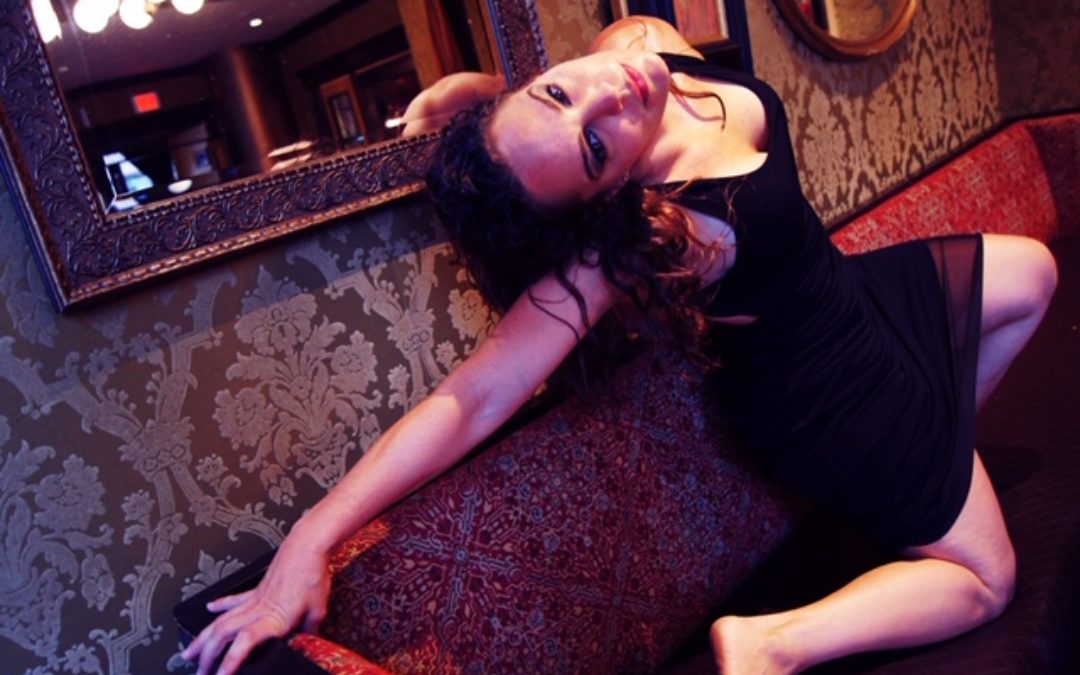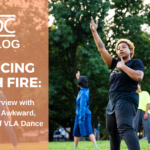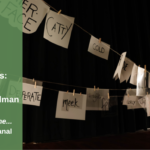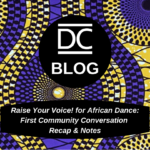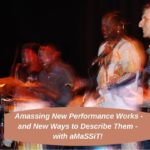Following Karen Krolak’s electronic interview, Communications Associate, Kiersten Resch, spoke with Karen and DeAnna Pellecchia to understand more about their 2018-2019 I-ARE residencies. DeAnna, Artistic Director of KAIROS’ Dance Theater has been working for many years with social constructs of language and how language through stereotypes impacts everyone through their daily lives.
This interview has been condensed and edited for clarity
Q: DeAnna, I’d like to hear more about your investigation of stereotypes and feminine objectification, as well as why you chose to work with this topic for your I-ARE residency.
A – DeAnna: You can look at female objectification in so many ways in our society. We’re really looking at how stereotypes reach us through their saturation in the media; every magazine, tv show, music and advertisements of all kinds – everything that you consume everyday – have this undertone or blatant objectification of women. Women’s bodies are used to sell everything from hot dogs to life insurance.
We’re also looking at how those really unattainable standards contribute to women always feeling they’re never good enough – never have the perfect body, can never reach that thing that they’re “supposed to reach” – which results in diminished self-value, self-worth and violence on both sides because with diminished self-worth, you feel you should be treated that way. The actual objectification of women is making women into objects. When you make a person into an object it’s very easy to justify violence against that.
Q: DeAnna, in the I-ARE 2018-2019 Press Release, your performance is described as a “visceral journey for the audience” – can you elaborate on that?
A – DeAnna: KAIROS Dance Theatre is not just dance and movement, but I’m always looking to present really rich, visual imagery. I’m always wanting to give the audience images to immerse them into a world that will allow them to go on a journey like sitting in a movie theatre watching a movie.
There will be original sets (not totally complete because the premiere is not until the fall) by a set designer that will carve out the space in a really particular way. There’s film coming in and out of the project plus text overlaid in some of the soundtrack. Finally, you’re seeing these really intense images created by the dancers that are vacillating from showing you the objectification and the images you’re used to seeing then devolving those images to show you the underbelly of that and what it really looks like.
Q: Both of you have a concept of language, how it relates to people and how it impacts them as well. DeAnna, you investigated stereotypes and feminine objectification through the feminine identity and Karen, your investigated topics on mourning, trauma and repair. Could each of you touch on how you began your investigation of each language as well as its impact.
A – Karen: It is counter intuitive that language was going to be the center of my work. When I first started thinking about the idea that became the Dictionary for Negative Space, I had actually planned for it to be a series of sequential dance concerts that would look at different stages of grieving.
As I started to look at what I wanted to do in these pieces, I realized there weren’t words to describe what I wanted to talk about. One of the contradictions about making a piece about a lack of language is how much language you need to understand what is going on.
Both mine and DeAnna’s pieces have talking within them and explanation within them and these interstitial things that will help to connect into the definitions in between things. Some are very direct in their responses and some meander a bit and I find that that digression and bits of humor can help a lot with a difficult topic so the whole thing doesn’t feel heavy, so there is still some levity within it, because I feel humor is a huge part of resilience.
A – DeAnna: A lot of this project was inspired by researching images from movies and fashion magazines- especially that have horrible depictions of women. What we find to be the most powerful section through 4 years of performance of this is the advertising section. We took a series of images from fashion magazines and we recreate them onstage. The thing that is so powerful is that this is a language all on its own. As soon as you see the image of the configurations of the bodies, you don’t need words to describe what that’s about. I would venture to say anyone in the world would be able to immediately identify with the image on stage because the objectivation of women is everywhere.
We also work a lot with language itself: I’ll sometimes have the dancers do writing exercises with prompts or free writing which would inspire movement that we could do.
One of the first exercises we did was to take the text from Ted Talk “Suddenly, My Body” spoken by Eve Ensler, and engage with authentic storytelling by having dancers sit in a circle and enter whenever they want to offer something. One of my dancers, Kristen, who was one of the last people to get up, did movements with her arms wrapped around her head that looked like she was caging and suffocating herself. This became the movement crumb for an entire section of the piece. These ideas often get transformed into nuggets of movement and then they get expanded upon.
Q: When asked how they collaborated with other artists, both Karen and DeAnna had specific responses with a similar outcome.
DeAnna stated her most important artistic collaborators are her dancers – all of which identify as women and half of her company are women of color. Because she engages with experiences from each of the artists she works with, DeAnna shared “it’s really not my story and the way I’m affected by these things, it’s our story.” DeAnna has been working on this project since 2015; “…before Trump was elected, before the MeToo movement was big and this new serious big wave of feminism even started. It’s been really interesting to see how the culture and climate has shifted around this work that I’ve been doing.”
Working on the project since 2015 has allowed DeAnna to have 15 to 16 outside voices be heard. “Each artist is chosen specifically because of the kind of work they are making inside of their field,” so all artists have common ground in the project. This allows DeAnna and the other creative artists to bounce ideas off of each other and inspire one another to create a cohesive process.
Karen stated she loves to “layer and leverage things” between all of her collaborators through the dance, writing, music, and design worlds. Karen has been able to speak with many different artists about The Dictionary of Negative Space in order to find ways to collaborate and put stories into a movement or visual form. “Most of us had some kind of really significant loss in our lives,” Karen stated, “being able to find people who are willing to dig into that vulnerability was important for all the artists who are involved in the show.”
Q: How did the ability to share your work with one another, as well as members of the community, help to clarify your conception of the piece?
A – DeAnna: To have the opportunity for people to be in the space, see our work, feel the work and give us the feedback that we’re looking for is really wonderful.
Part of my mission for making dance is to not just to make dance for dance audiences, but for anyone to feel like they can access dance. If the audience can access a familiar point, they feel more comfortable watching. This allows them to bring themselves into the work and go on the journey with you.
In my work, I’m trying to give the audience an image they can easily connect with and understand. Then, the next image you get might shift a little bit to get you to think and continue on the journey.
To have the opportunity to get people invested and watching the work who don’t want to change it but rather give ideas that make people think and provide food for thought is what is so helpful about this residency. I may not incorporate their feedback, but it may help me think about something else and make another decision. It’s all so personal that it’s hard to get that perspective for all collaborators.
Karen shared the same views as DeAnna and both appreciated having the opportunity to view each other’s work in such a productive environment because it allowed them to hear a lot of feedback from different perspectives through a mixed audience of members the dance community. It has also allowed them to learn more about their own work because both Karen and DeAnna use elements of dance theatre, allowing them to bounce ideas off of one another.
Q: What was, or do you hope to be the most impactful part of your workshops that relate to your I-ARE projects?
A – Karen: I really enjoyed our workshop. It was really interesting to me that we had two film students from Emerson who wanted to film it for a class. They didn’t identify as dancers but because of the topic, they joined in on the exercises with us. It was an interesting cross section of men and women from their 20’s to their 60’s plus those who do and do not identify as dancers.
I think artwork that has a topic that slices through bigger demographics brings more people into the dance world. It seems to be what The Dance Complex is building in this residency and it’s really important in the dance community.
A – DeAnna: We did a workshop that was an exploration of writing and movement exercises that were based on the generation one list of words to describe yourself, and another of words people paste on you. How the person interprets the word and how the world interprets the person are two different things about self-discovery which I think bridges the gap in the dance community.
My piece is about female stereotypes but it’s also about gender stereotypes. We are all subject to stereotypes and we all have a story written about us that we wouldn’t agree with. How do we start getting people in rooms to listen to people say “this is who I am” because everyone is in the same boat.
In my class, I was trying to address this bigger conversation of what the stereotypes we all experience are, and how we can stop stereotyping people. I think this is the crossover with Karen’s piece as well- can you stop and not just hear but listen. That’s the bridge that’s reaching out into the community and bringing them into the conversation in the real way. It’s the intrinsic part of both of our work that is the most important part.
To purchase tickets for the I-ARE informal showings, click HERE.
To learn more about The Dance Complex’s I-ARE Program, click HERE.
To read the recent blog post featuring more about Karen Krolak’s work, click HERE.

